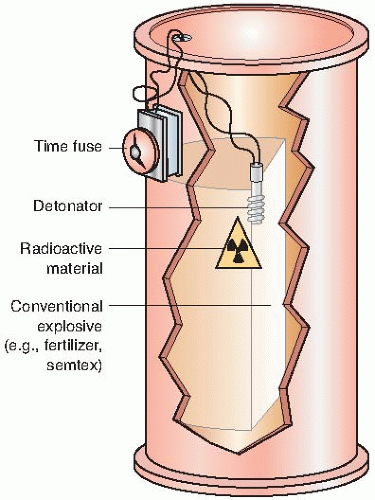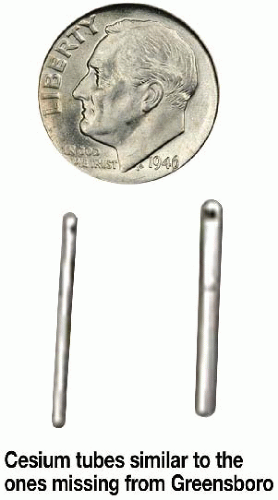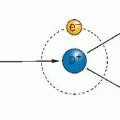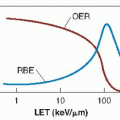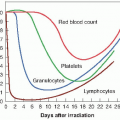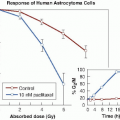Radiologic Terrorism
In the years following the 2001 attack on the World Trade Center in New York City, and the resulting tension between the Western world and militant elements of Islam, there has been much talk of the possibility of an attack involving radiation and/or radioactive materials.
Several different scenarios are possible, varying widely in the probability that they will occur and will result in very different consequences. The various possibilities and the consequences are discussed in more detail in the subsequent paragraphs.
▪ POSSIBLE SCENARIOS FOR RADIOLOGIC TERRORISM
The detonation of a nuclear weapon, in or close to a major city. This is considered “highly unlikely,” but not impossible because several portable “suitcase bombs” are said to be missing, following the breakup of the former Soviet Union. These weapons might perhaps be comparable to the bombs used on Hiroshima and Nagasaki that ended World War II. If such an event were to take place, the consequences would be catastrophic.
Thousands of people would be killed by blast and heat.
Hundreds to thousands would be killed or made ill by the acute radiation syndrome (ARS) because of exposure to γ-rays and neutrons.
A long-term risk of leukemia and solid cancers in those who survive the acute effects would result principally because of exposure to γ-rays and neutrons and also to fallout.
An attack on a nuclear power station. It is claimed (although, of course, never tested) that the nuclear reactor itself is so massively built that it would not be destroyed if a jetliner, full of fuel, were deliberately flown into it. What may be more vulnerable are the used fuel elements, often stored in “swimming pool” facilities close to the reactor because, to date, no long-term storage facilities are in widespread use. An attack of this nature is usually considered unlikely, but if it occurred, the huge amount of radioactive material in the used fuel elements (with both long and short half-lives) would spread over the surrounding countryside. The consequences might be the following:
Individual doses are unlikely to be high enough to cause the ARS.
There would be a long-term risk of leukemia and solid cancers in those exposed to external radiation or in those ingesting and/or inhaling radioactive material.
There would certainly be chaos and enormous economic loss because cleanup would be a long and slow process.
The detonation of a “dirty bomb,” or to give its official description, a radiologic dispersal device (RDD). This consists of a relatively small amount of radioactive material attached to a conventional explosive material, such as a plastic explosive or even a quantity of fertilizer (Fig. 14.1). The principle
is that the conventional explosive material scatters the radioactive material over a wide area. Ideally, the radioactive material should be vaporized, but in practice, this is difficult to achieve except perhaps for cesium-137.
The probability of a “dirty bomb” is considered to be “highly likely”; indeed, some wonder why such an event has not yet occurred. For example, in the year 2003, British intelligence found a diagram illustrating the principle of an RDD in Herat, Afghanistan, and concluded that Al Qaeda had succeeded in constructing a small dirty bomb, although the device was never found (Fig. 14.2). The consequences of a “dirty bomb” might be as follows:
It is unlikely that any person will receive a dose of radiation sufficient to cause the ARS.
The most likely scenarios would be a small number of persons contaminated with radioactive materials, either on their clothes and skin, or inhaled or ingested. The possibility of a minimal long-term risk of leukemia or solid cancers could not be ruled out.
The certain consequence would be chaos, psychological terror, and widespread fear.
Hidden radiation exposure device (RED). An alternative to the “dirty bomb” would be to place a γ-emitting source, such as cesium-137, in a locker or garbage can in a busy public place, such as Grand Central Station, and then make a public disclosure of its presence some days or weeks later. In the intervening period, thousands of people passing close by may have been exposed to a dose of radiation. Like the “dirty bomb,” the probability of an RED is considered to be “highly likely.” The consequences of an RED are as follows:
Fear and psychological chaos
Unlikely that any person would receive sufficient radiation to result in the ARS
Very small long-term possibility of radiationinduced malignancies
▪ AVAILABILITY OF RADIOACTIVE MATERIAL
As was previously discussed in scenario 1, the detonation of a nuclear weapon would involve a leftover “suitcase bomb” from the former Soviet Union, or the production or theft of fissile material. All possible, but very unlikely. The attack on a nuclear power station, as discussed in scenario 2, would necessitate the hijacking of a commercial airliner. This is again possible, but unlikely because of improved security. Scenarios 3 and 4 require the availability of only relatively small quantities of radioactive material. In both cases, the fear and psychological chaos are not directly related to the quantity of radioactivity or the magnitude of the radiation dose involved. If a Geiger counter ticks, that would be sufficient to cause chaos. Small amounts of radioactive material are readily available.
There are several examples. First, in 2004 in London, an Islamic terrorist cell had collected several thousand household smoke detectors, readily available from hardware stores (Fig. 14.3). Each contains a tiny amount (few thousand becquerels) of americium-241, which is an α-emitter, only dangerous if inhaled or ingested. Imagine the chaos if these were dispersed in a crowded public place.
Second, moisture density gauges, used in the laying of tarmacadam on road surfaces, contain small amounts of americium-241 and cesium-137 (Fig. 14.4). More than 23,000 are in regular use in the United States and about 50 per year are lost or reported missing.
Third, cesium-137 sources are widely used in hospitals and medical centers (Fig. 14.5). Cesium is a very suitable material for a “dirty bomb” because it has a relatively long half-life of about 30 years and, more importantly, it vaporizes readily and can be widely spread by an explosive device. Large cesium sources such as blood or total body animal irradiators are now the subject of intense security and would be difficult to acquire illegally. On the other hand, the smaller sources used for the brachytherapy of cancer do get lost occasionally. In 1998, 19 small tubes of cesium-137, with total activity of about 22 GBq, were reported missing from a medical center in Greensboro, North Carolina.
▪ HEALTH EFFECTS OF RADIATION
The health effects of radiation can be divided into two types: deterministic and stochastic, which have quite different characteristics.
Deterministic effects only occur at relatively high doses and result from the killing of many cells in a tissue or organ. Above a tissue-specific dose threshold, the severity of the damage increases with increasing dose as more and more cells are killed. As long as the dose threshold is not exceeded, the effect will not be seen.
Some deterministic effects do not manifest until years later (e.g., cataract, fibrosis) and are therefore known as late effects




Stay updated, free articles. Join our Telegram channel

Full access? Get Clinical Tree


